Struggling with choosing Pokémon for the Master League in Pokémon GO? This tier list will explain the different battle terms used in the Master League, which Pokémon are best for each battle type, and a few tips on putting your team together. Enjoy reading this Pokémon GO Master League tier list!
Best Pokémon to use in the Pokémon GO Master League, Ranked
The Master League in Pokémon GO is the highest level of PvP battles, where there are no CP limitations, making it the most competitive league. In this league, you'll encounter Legendaries, Pseudo-Legendaries, and Mythicals, all powered up to level 50.
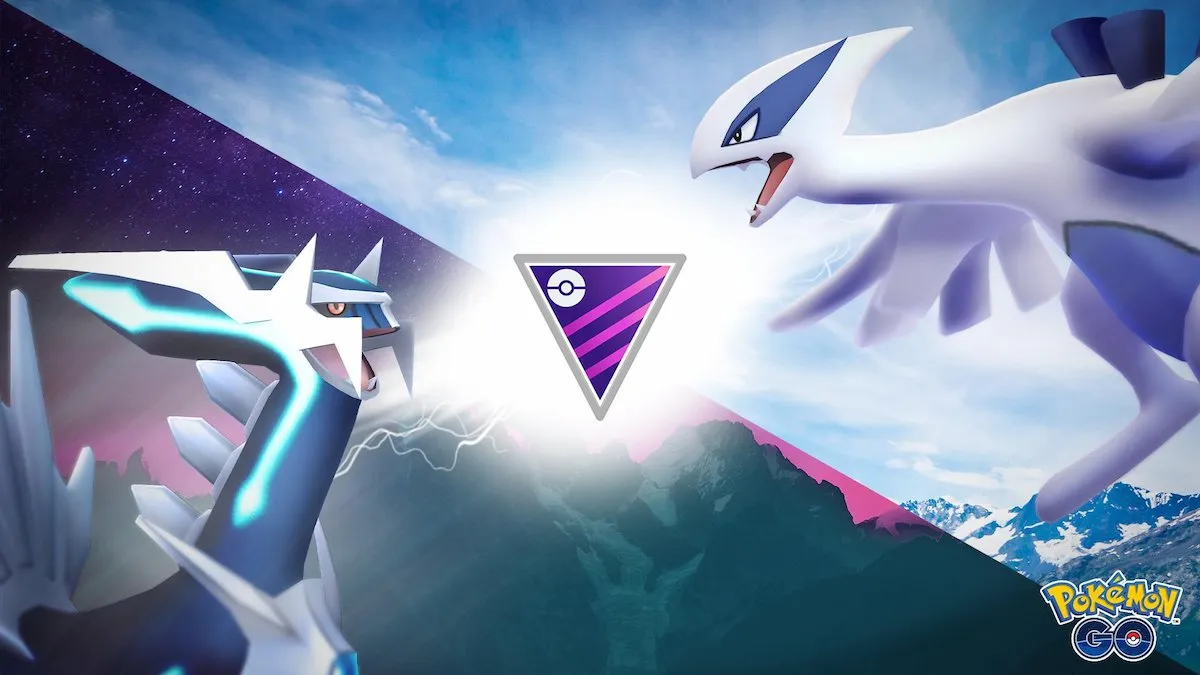
Building a strong Master League team requires a fair bit of investment in Candy and Stardust, but knowing which Pokémon to use can give you an edge. There are five categories Pokémon fall into during leagues: Lead, Attacker, Defender, Switch, and Closer.
Lead Master League Pokémon Tier List
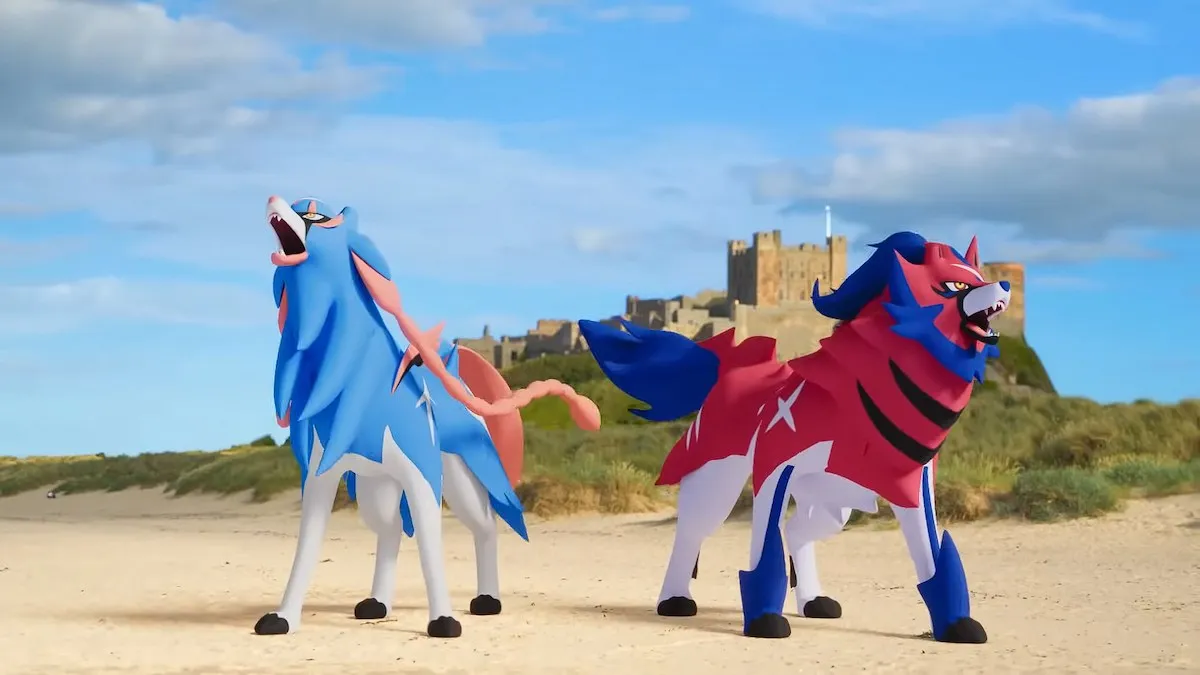
Lead Pokémon are the first ones sent into battle and are crucial for setting the tempo. They need to have good resistances, bulk, and powerful charge moves to pressure opponents from the start.
| Tier | Pokémon & Moveset |
|---|---|
| S | Dialga (Dragon Breath, Iron Head, Draco Meteor) Groudon (Mud Shot, Fire Punch, Earthquake) Kyogre (Waterfall, Surf, Thunder) Palkia (Dragon Tail, Aqua Tail, Draco Meteor) Shadow Mewtwo (Psycho Cut, Shadow Ball, Psystrike) Yveltal (Snarl, Dark Pulse, Focus Blast) Zacian (Quick Attack, Close Combat, Play Rough) |
| A | Dragonite/Shadow Dragonite (Dragon Breath, Dragon Claw, Superpower) Giratina (Altered Forme) (Shadow Claw, Dragon Claw, Shadow Sneak) Giratina (Origin Forme) (Shadow Claw, Shadow Ball, Ominous Wind) Zekrom (Dragon Breath, Wild Charge, Crunch) |
| B | Goodra (Dragon Breath, Aqua Tail, Thunder Punch) Gyarados (Dragon Breath, Aqua Tail, Crunch) Shadow Magnezone (Spark, Wild Charge, Mirror Shot) |
| C | Cetitan (Powder Snow, Avalanche, Body Slam) Florges (Fairy Wind, Disarming Voice, Moonblast) |
| D | Skeledirge (Incinerate, Shadow Ball, Disarming Voice) |
S-tier Lead Pokémon
S-tier Lead Pokémon are the cream of the crop in the Master League. They have the perfect balance of resistances, bulk, and shield pressure, allowing them to dictate the flow of battle from the start.
One of the best examples of this is Dialga, an absolute powerhouse. With its Dragon/Steel typing, Dialga resists ten different types, giving it the upper hand against a wide range of opponents. Its access to Dragon Breath for fast, consistent damage, paired with Iron Head for baiting shields and Draco Meteor for sheer power, makes it a force to be reckoned with.
A-tier Lead Pokémon
A-tier Lead Pokémon are strong and reliable picks, but they may have a few weaknesses that hold them back from reaching S-tier status.
Dragonite is a fantastic example of an A-tier Lead. With its powerful Dragon Breath and access to fast-charging moves like Dragon Claw and Superpower, it can pressure shields and deal consistent damage throughout the battle. Dragonite's bulk also allows it to stay in the fight longer, making it a great choice for taking on a variety of opponents.
B-tier Lead Pokémon
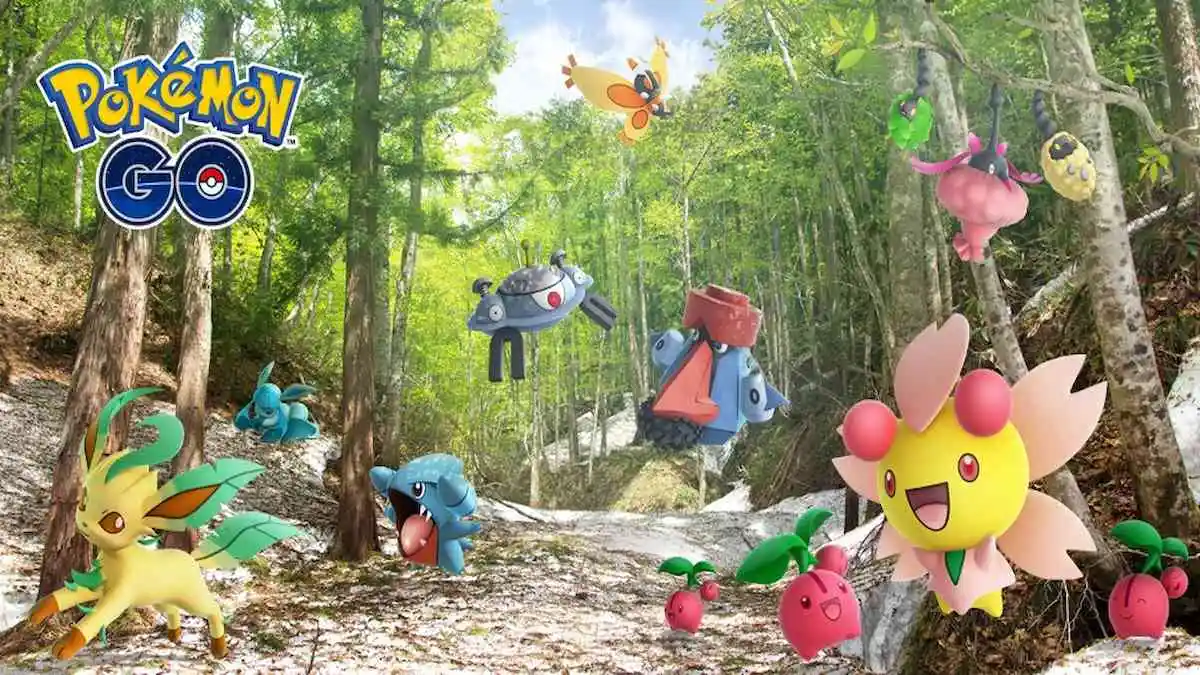
B-tier Lead Pokémon are solid picks with some great strengths, but they come with notable drawbacks that prevent them from reaching the higher tiers.
Shadow Magnezone has a high damage output with Wild Charge and Mirror Shot, allowing it to put pressure on your opponent's shields while also dealing serious damage. Its Electric/Steel typing gives it useful resistances, particularly against Fairy- and Dragon-types.
However, Shadow Magnezone's main weakness is its fragility, especially in its Shadow form. The extra damage it takes means that even though it hits hard, it often can't stay in the fight long enough to outlast opponents.
C-tier Lead Pokémon
C-tier Lead Pokémon can hold their own in certain matchups, but they often struggle to keep pace with higher-tier options due to various weaknesses and/or limitations.
Florges is a prime example of a C-tier Lead. With its Fairy typing and moves like Fairy Wind and Moonblast, it can be a great counter to popular Dragon-types in the Master League. Its decent bulk helps it stick around in battles, and it can apply solid shield pressure against certain foes.
Florges moveset is somewhat predictable, making it easier for opponents to play around.
D-tier Lead Pokémon
D-tier Lead Pokémon are usually niche picks that struggle to compete against the stronger options in the Master League.
Skeledirge's unique Fire/Ghost typing gives it some interesting resistances, and its access to moves like Incinerate and Shadow Ball can pack a punch.
Skeledirge's main downfall is its lack of speed and reliance on heavy charge moves, which often leaves it vulnerable in fast-paced battles. Its low energy generation means it can’t apply as much shield pressure as other leads, and it's easily outpaced by the top-tier Pokémon in the meta.
Attacker Master League Pokémon Tier List

Attackers excel when shields are still in play. These Pokémon have bulk and strong attacks, allowing them to withstand opposing defenses while continuing to deal damage.
| Tier | Pokémon & Moveset |
|---|---|
| S | Dragonite (Dragon Breath, Dragon Claw, Superpower) Florges (Fairy Wind, Disarming Voice, Moonblast) Kommo-o (Dragon Tail, Close Combat, Dragon Claw) Melmetal (Thunder Shock, Rock Slide, Superpower) Shadow Dragonite (Dragon Breath, Dragon Claw, Superpower) |
| A | Goodra (Dragon Breath, Aqua Tail, Thunder Punch) Gyarados (Dragon Breath, Aqua Tail, Crunch) Shadow Dragonite (Dragon Breath, Dragon Claw, Superpower) Zekrom (Dragon Breath, Wild Charge, Crunch) |
| B | Annihilape (Counter, Night Slash, Shadow Ball) Hisuian Avalugg (Powder Snow, Rock Slide, Icy Wind) |
| C | Hippowdon (Sand Attack, Weather Ball (Rock), Earth Power) Shadow Snorlax (Lick, Body Slam, Superpower) |
| D | Shadow Hippowdon (Sand Attack, Weather Ball (Rock), Earth Power) |
S-tier Attacker Pokémon
S-tier Attackers are Pokémon that excel at taking down opponents when shields are still in play, thanks to their powerful moves, solid resistances, and ability to consistently deal damage.
Kommo-o is an excellent S-tier Attacker in the Master League. Its Dragon/Fighting typing gives it a strong set of resistances, allowing it to handle a variety of opponents. Kommo-o's access to fast moves like Dragon Tail lets it apply pressure quickly, while Close Combat and Dragon Claw give it the power to break through shields and hit hard.
It's a real threat to bulky Steel-types like Dialga and Metagross, and its bulk helps it stay in the fight longer than many other attackers.
A-tier Attacker Pokémon
A-tier Attackers are solid choices that can dish out impressive damage and handle a variety of opponents, though they may lack some of the bulk that S-tier Pokémon possess.
Zekrom fits snugly into this category with its powerful Electric/Dragon typing. Its diverse moveset allows it to apply significant pressure on both opponents and shields. Zekrom's bulk is commendable, helping it to survive encounters with a range of threats.
What keeps Zekrom from reaching S-tier is its vulnerability to Fairy-types, which are prevalent in the meta. While it can put up a good fight, Zekrom can struggle against these counters, preventing it from being the ultimate powerhouse it has the potential to be.
B-tier Attacker Pokémon
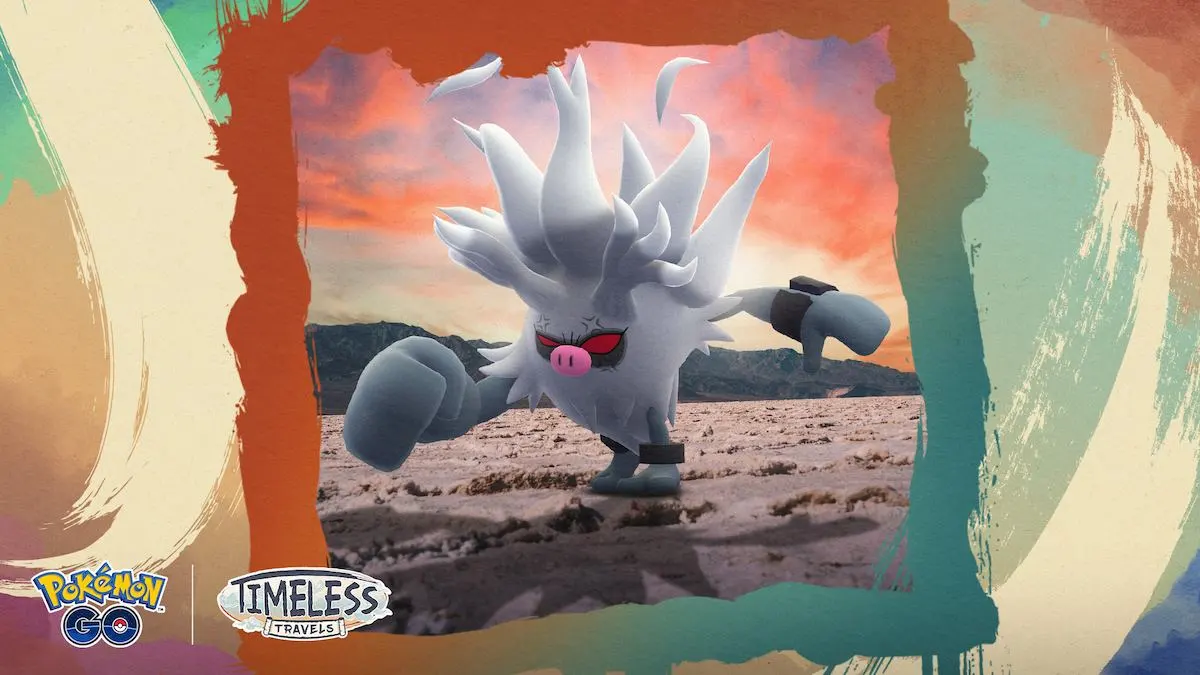
B-tier Attackers are reliable options that can hold their own in battles but may not consistently match the performance of the top-tier Pokémon due to certain limitations.
Annihilape falls into this category with its Fighting/Ghost typing. Annihilape has a unique set of resistances and access to moves like Counter and Shadow Ball, allowing it to deal significant damage and pressure opponents effectively. Its decent bulk means it can take a hit, which is always a plus in PvP.
It doesn't quite reach S- or A-tier status because it can struggle against common Fairy- and Psychic-types, which can easily exploit its weaknesses. While it has a solid moveset, it sometimes lacks the raw power needed to finish off bulkier opponents quickly.
C-tier Attacker Pokémon
C-tier Attackers are Pokémon that can contribute to battles but often lack the punch needed to stand out among the competition.
Hippowdon is a good example of a C-tier Attacker because it can deal decent damage while also providing a solid bulk. However, its performance is somewhat hampered by a reliance on slower moves and an overall lack of speed, which means it can struggle to outpace faster opponents.
While Hippowdon can certainly hold its own and absorb some hits, its limited ability to pressure opponents and capitalize on shield situations keeps it firmly in the C-tier.
D-tier Attacker Pokémon
D-tier Attackers are typically those Pokémon that struggle to make a significant impact in battles, often due to poor typing, limited movesets, or lack of bulk. Shadow Hippowdon retains the same Ground typing and moveset as its regular form, but the shadowy variant suffers from increased damage taken due to its frailer stats.
Although it can still deal decent damage with moves like Earth Power, the combination of its vulnerability and lack of speed means it often finds itself overwhelmed by faster, stronger attackers.
Defender Master League Pokémon Tier List
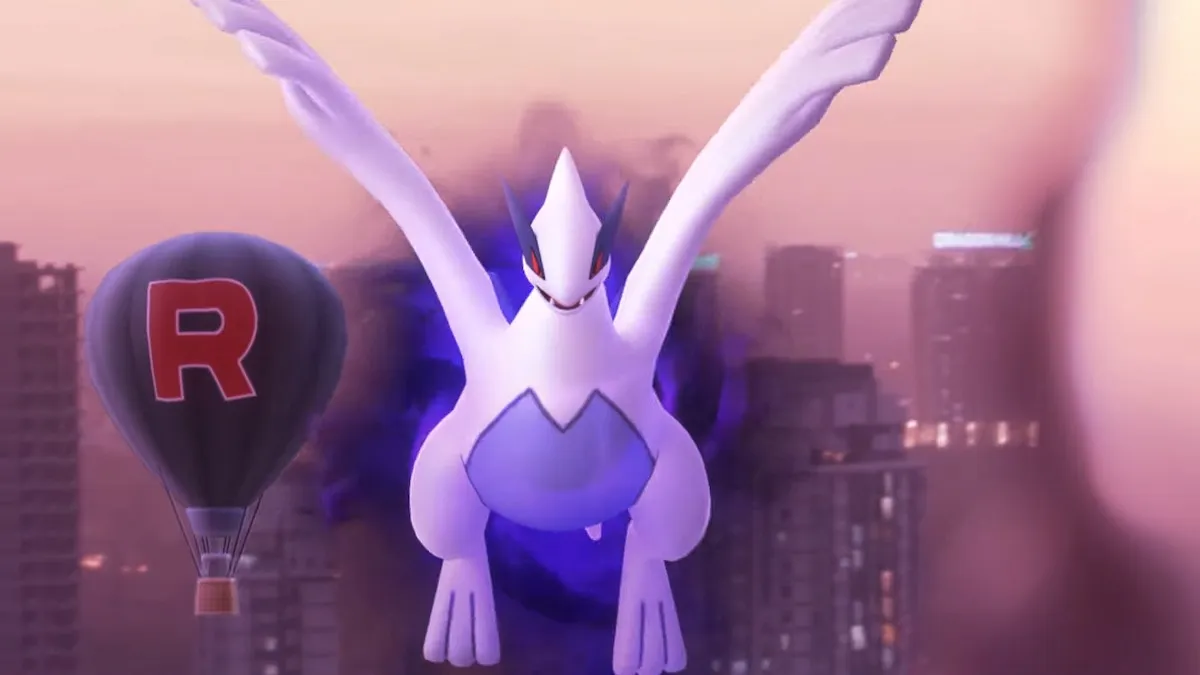
Defenders are damage sponges that have great bulk and resistances. Understanding Pokémon that can soak up hits can be extremely valuable.
| Tier | Pokémon & Moveset |
|---|---|
| S | Blissey (Zen Headbutt, Dazzling Gleam) Lugia (Dragon Tail, Sky Attack, Aeroblast) Metagross (Zen Headbutt, Meteor Mash, Earthquake) Togekiss (Charm, Dazzling Gleam, Flamethrower) |
| A | Registeel (Lock-On, Focus Blast, Zap Cannon) Snorlax (Zen Headbutt, Outrage, Body Slam) Umbreon (Snarl, Foul Play, Last Resort) |
| B | Goodra (Dragon Breath, Draco Meteor, Power Whip) Milotic (Waterfall, Hyper Beam, Surf) |
| C | Avalugg (Ice Fang, Avalanche, Body Slam) |
| D | Steelix (Iron Tail, Earthquake, Heavy Slam) |
S-tier Defender Pokémon
S-tier Defenders can absorb massive amounts of damage while dishing out just enough pressure to keep opponents on their toes.
With its incredible HP and access to moves like Zen Headbutt and Dazzling Gleam, Blissey can withstand even the strongest attacks while slowly whittling down the opponent's health. Its Fairy typing provides valuable resistances against common threats, making it a nightmare for many Attackers to break through.
While it may not have the quickest charge moves, its bulk allows it to comfortably outlast opponents and soak up damage, giving it the upper hand in prolonged battles. With the right team support, Blissey can effectively shield allies from damage.
A-tier Defender Pokémon
A-tier Defenders are solid choices that provide excellent durability and utility on the battlefield, making them formidable opponents even if they don't quite reach the heights of S-tier.
With access to moves like Snarl and Foul Play and solid damage stats, Umbreon can endure a barrage of hits while delivering consistent damage. Its Dark typing gives it strong resistance to Psychic and Ghost-type moves, allowing it to effectively counter popular threats like Mewtwo and Gengar.
Though Umbreon shines in terms of defense, its reliance on energy generation and charge moves means it can struggle against faster Attackers that can wear it down before it has a chance to retaliate.
B-tier Defender Pokémon
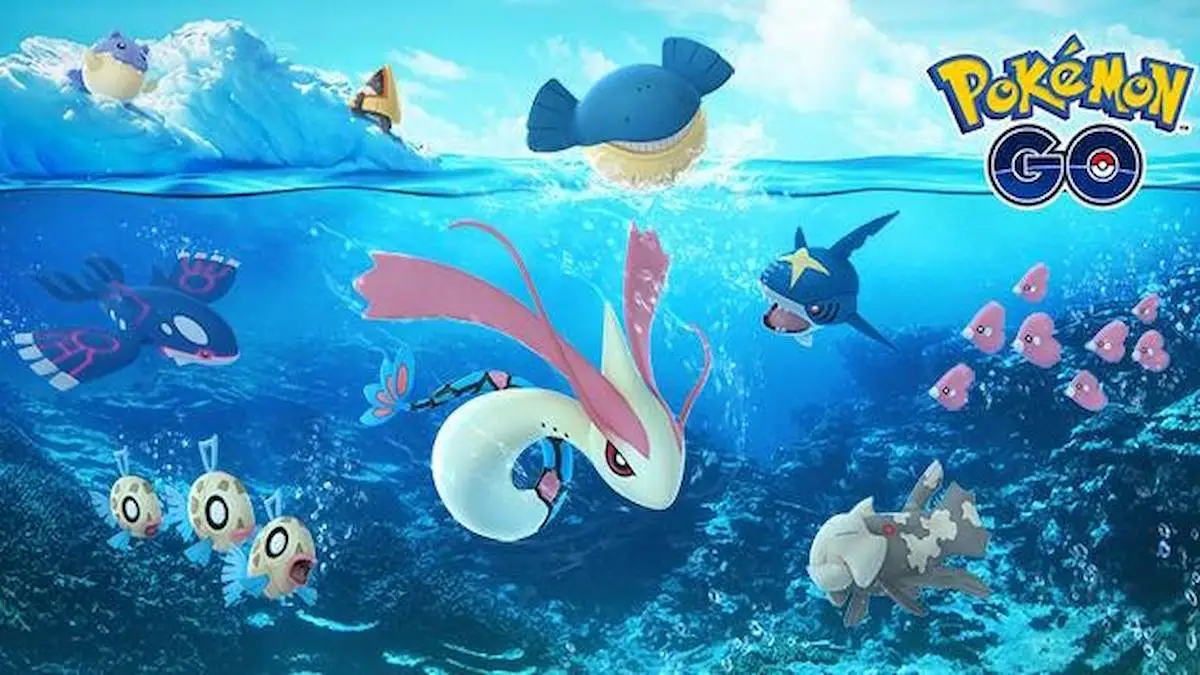
B-tier Defenders offer a balanced combination of durability and strategic effectiveness, making them reliable choices in battle, though they may lack the adaptability seen in higher-ranked Pokémon.
Milotic's Water typing grants it resistances to Fire and Steel moves, allowing it to shine against certain threats. However, Milotic doesn't quite match the sheer endurance of S-tier or A-tier Defenders like Blissey or Umbreon, as it can be vulnerable to Electric and Grass types that are common in the meta.
C-tier Defender Pokémon
C-tier Defenders are solid choices that can absorb damage and provide some utility, but they often lack the stats and skills needed to thrive against tougher opponents.
Avalugg can hold its own in battles, particularly against Dragon, Flying, and Grass types. However, its Ice typing leaves it vulnerable to Fighting, Rock, and Fire moves, which are prevalent in the Master League.
While Avalugg's bulk makes it a decent option for soaking up damage, it lacks the damage output and flexibility seen in higher-tier Defenders. This means that while it can serve as a reliable shield for a short while, it may struggle to turn the tide of a battle against more powerful foes.
D-tier Defender Pokémon
D-tier Defender Pokémon may have some uses, but they tend to struggle significantly against the more dominant threats in the Master League.
Thanks to its Iron Tail and Earthquake moves, Steelix can dish out decent damage, especially against Fairy and Rock types. However, its Steel and Ground typing leaves it vulnerable to Fighting, Water, and Fire moves.
While Steelix can absorb a few hits, it ultimately struggles to maintain a presence in tougher battles, leading to its position in the D-tier. So, if you're considering using Steelix, be prepared for some uphill battles where it might not hold up as well as you'd hope!
Switch Master League Pokémon Tier List
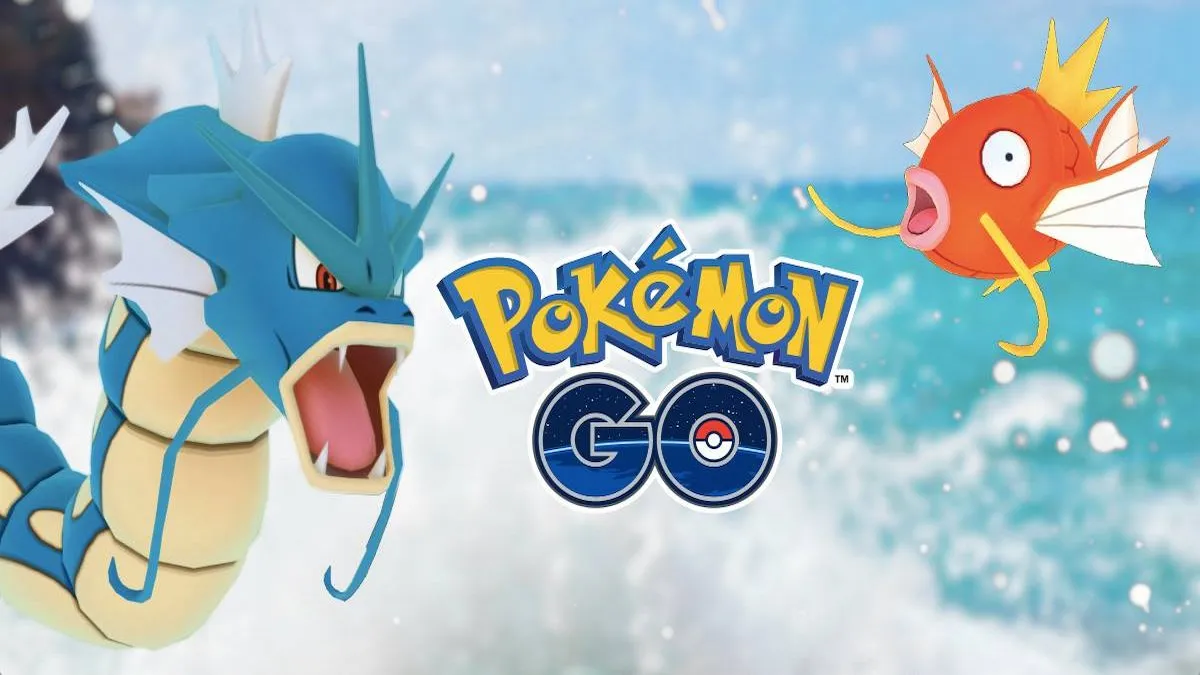
Switch Pokémon are needed if you want to change the tide of a battle. They can handle bad matchups and force your opponent to adapt, which can help you get ahead.
| Tier | Pokémon & Moveset |
|---|---|
| S | Goodra (Dragon Breath, Aqua Tail, Thunder Punch) Gyarados (Dragon Breath, Aqua Tail, Crunch) Mewtwo (Psycho Cut, Psystrike, Focus Blast) Shadow Feraligatr (Shadow Claw, Hydro Cannon, Ice Beam) Shadow Snorlax (Lick, Body Slam, Superpower) |
| A | Golisopod (Shadow Claw, Liquidation, X-Scissor) Landorus (Incarnate Forme) (Mud Shot, Rock Slide, Earth Power) Ursaluna (Tackle, High Horsepower, Ice Punch) |
| B | Feraligatr (Shadow Claw, Hydro Cannon, Ice Beam) Raikou (Volt Switch, Wild Charge, Shadow Ball) Shadow Hippowdon (Sand Attack, Weather Ball (Rock), Earth Power) |
| C | Shadow Hippowdon (Sand Attack, Weather Ball (Rock), Earth Power) |
| D | Hisuian Avalugg (Powder Snow, Rock Slide, Icy Wind) |
S-tier Switch Pokémon
S-tier Switches are able to pivot into a battle and handle whatever is thrown their way, often swinging matchups in your favor.
Goodra is an absolute boss as a Switch due to its fantastic typing and incredible bulk. With a Dragon typing, Goodra resists a variety of popular Master League threats like Kyogre, Dialga, and Giratina, while also dishing out decent damage with moves like Dragon Breath.
Its ability to tank hits gives Goodra the durability needed to draw out shields or wear down the opponent's team.
A-tier Switch Pokémon
A-tier Switches are incredibly strong and reliable but might have a few matchups where they don't shine as brightly as S-tier options.
Ursaluna brings incredible versatility to the game with its Ground and Normal typing. It has the bulk to tank moves from many common threats and can dish out serious damage with Tackle as its Fast Move, alongside Thunder Punch and High Horsepower.
The only reason Ursaluna doesn't quite reach S-tier is due to its vulnerability to Fighting and Water types, and it can struggle against Dragon-types if caught in an unfavourable matchup. Despite these weaknesses, Ursaluna is a strong Switch with great staying power and coverage.
B-tier Switch Pokémon
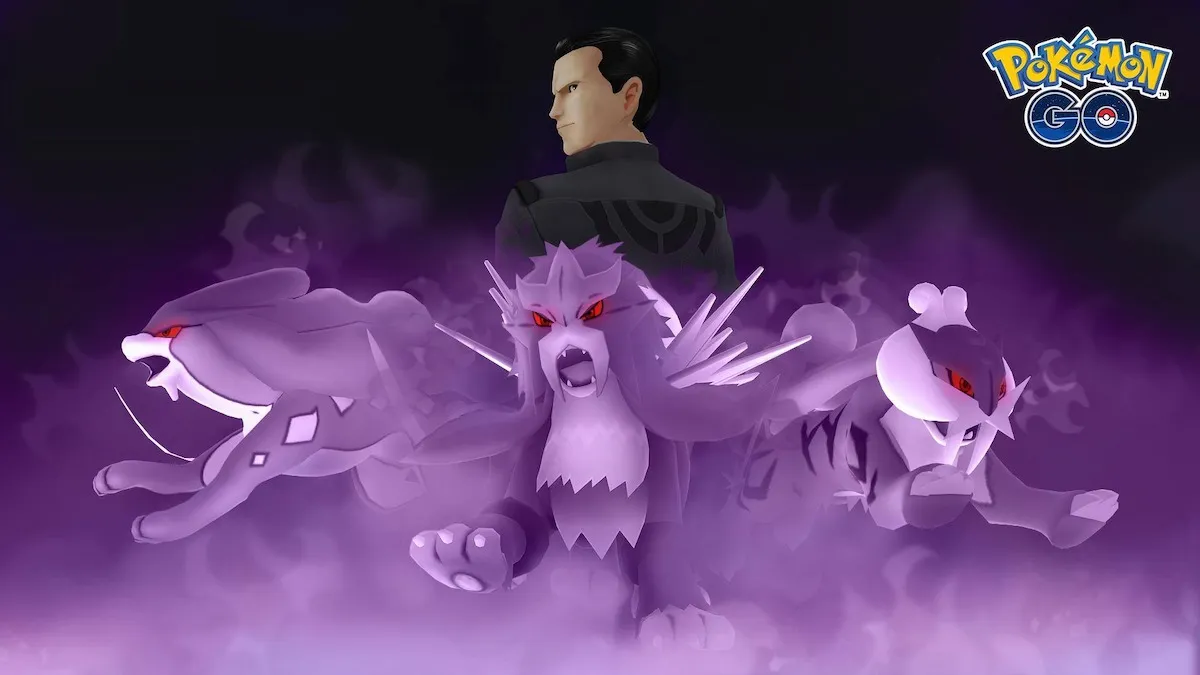
B-tier Switches are solid choices but come with a few key weaknesses that prevent them from climbing higher in the ranks.
Raikou fits this tier perfectly. With its Electric typing, Raikou shines in matchups against Flying and Water types like Kyogre, Lugia, and Ho-Oh (all Legendaries!), making it a reliable option when you need a Switch. Its Volt Switch and Wild Charge combination provides powerful, quick bursts of damage, while Shadow Ball gives it some nice coverage against Psychic and Ghost types.
However, Raikou's relatively low bulk compared to higher-tier switches, combined with its vulnerability to Ground and Dragon-type moves, keeps it from climbing into the A- or S-tier ranks.
C-tier Switch Pokémon
C-tier Switches have some potential, but they often need careful play and favorable matchups to really shine.
Shadow Hippowdon is a great example of this, offering decent versatility but lacking the bulk and consistency required to thrive in higher tiers. Its varied moveset, including Ice Fang and Weather Ball, gives it some unpredictable coverage, but the Shadow status comes with a tradeoff - its already average bulk gets reduced further.
While it can deal out respectable damage, it just can't take enough hits to perform reliably as a switch in tougher Master League battles.
D-tier Switch Pokémon
D-tier Switches are those that, while not without merit, simply struggle to find a place in the Master League due to various weaknesses.
Hisuian Avalugg falls into this category as its Ice typing leaves it vulnerable to many common threats, particularly Fighting, Fire, Rock, and Steel types. While it can hit hard with Ice-type moves, it's simply too frail and too slow to perform well as a Switch. Opponents can easily counter it, and without much flexibility in its move pool or typing, Hisuian Avalugg often gets outclassed by better options in the Master League.
Closer Master League Pokémon Tier List
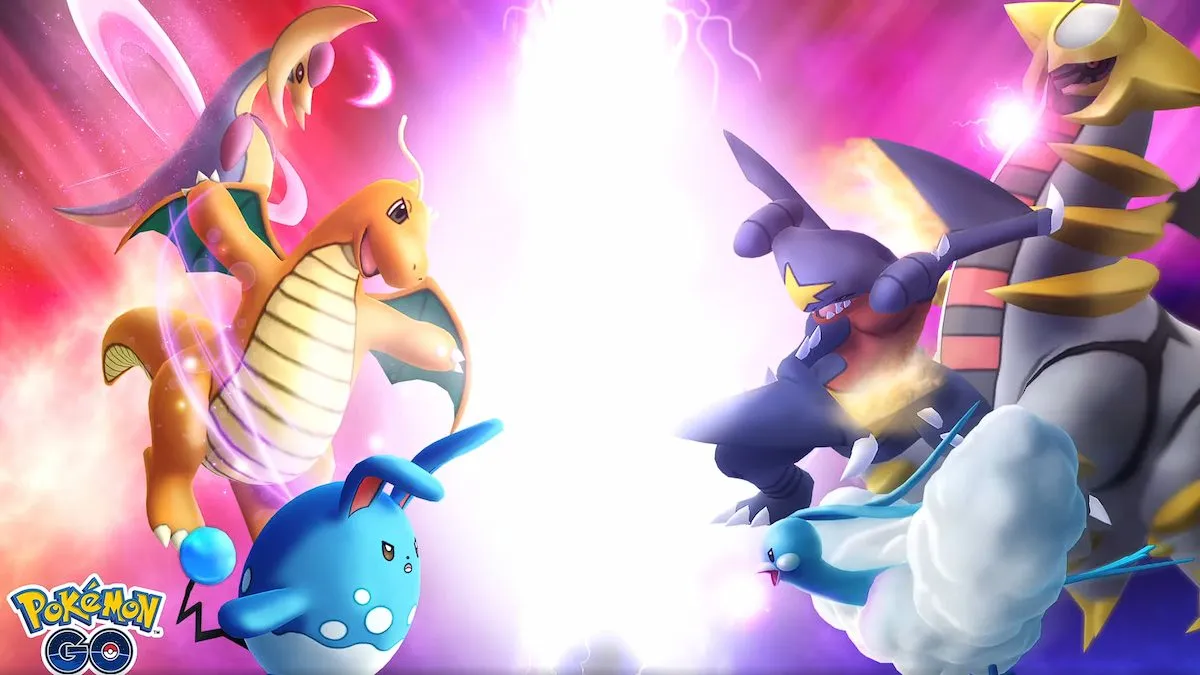
Closers are ideal for finishing off the battle when shields are gone. They are either very tough to beat or dish out extreme damage with high-powered Charge Moves.
| Tier | Pokémon & Moveset |
|---|---|
| S | Garchomp (Mud Shot, Earth Power, Outrage) Gholdengo (Hex, Shadow Ball, Focus Blast) Shadow Dragonite (Dragon Breath, Dragon Claw, Superpower) Shadow Gyarados (Dragon Breath, Aqua Tail, Crunch) |
| A | Metagross (Bullet Punch, Meteor Mash, Earthquake) Shadow Mamoswine (Powder Snow, Avalanche, High Horsepower) Ursaluna (Tackle, High Horsepower, Ice Punch) |
| B | Florges (Fairy Wind, Disarming Voice, Moonblast) Lapras (Ice Shard, Surf, Ice Beam) Mamoswine (Powder Snow, Avalanche, High Horsepower) |
| C | Annihilape (Counter, Night Slash, Shadow Ball) |
| D | Hippowdon (Sand Attack, Weather Ball (Rock), Earth Power) |
S-tier Closer Pokémon
S-tier Closers are the Pokémon you want to have in your back pocket when the match is coming down to the wire. These powerhouses excel at cleaning up opponents when shields are down, making them incredibly reliable in the final moments of battle.
Shadow Dragonite takes this role to another level with its devastating offensive presence. Its Dragon Breath Fast Move is oppressive, quickly chipping away at anything in its path, while Dragon Claw provides rapid charge pressure. Even more dangerous, Superpower gives Shadow Dragonite the coverage to deal with Steel types that would otherwise wall it. The added Shadow boost to its already high Attack makes it a force of nature in the endgame, easily overwhelming opponents when shields are no longer in play.
A-tier Closer Pokémon
A-tier Closers can hold their own in most endgame scenarios, though they might lack the overwhelming versatility or bulk to handle every situation.
Shadow Mamoswine is a strong A-tier Closer, with incredible Ice and Ground-type coverage that lets it dismantle Flying types like Lugia and Dragon types like Giratina and Dialga. With Powder Snow charging up Avalanche and Bulldoze quickly, Mamoswine can bring serious heat in the late game.
It doesn't quite hit S-tier because its fragility can sometimes leave it vulnerable to fast-charging opponents or counters with strong neutral damage. Despite this, its ability to hit hard in various matchups makes it a dependable closer when used wisely.
B-tier Closer Pokémon
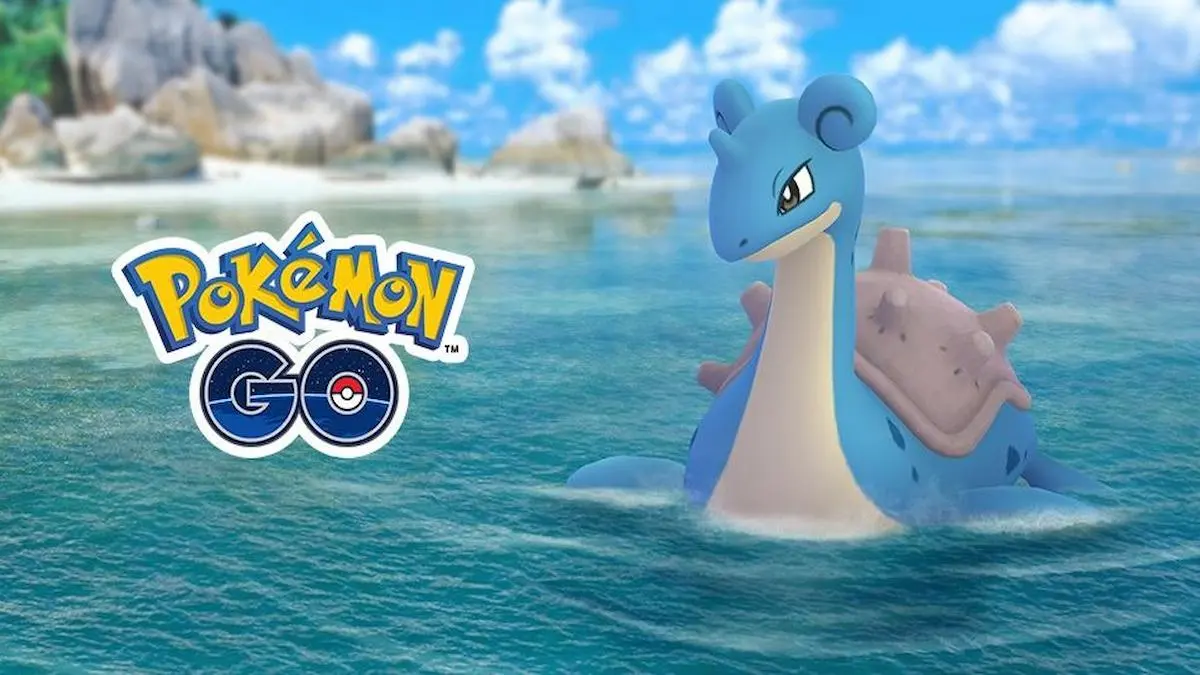
B-tier Closers have a solid presence in battles, but they often fall short due to weaknesses or slower charging moves.
Lapras is a great example of a reliable but limited closer. With a great mix of bulk and typing, Lapras can handle matchups against Dragon and Flying types with its Ice Shard and Surf, and it provides some strong defensive advantages in the final stages of battle.
What holds Lapras back from A-tier or S-tier status is its relatively slow energy gain and limited versatility. It struggles against Steel and Electric types, making it less consistent in endgame scenarios where these types are common. Still, its bulk and reliable damage output make it a decent option for closing out fights, especially when up against Dragons.
C-tier Closer Pokémon
C-tier Closers can perform in specific situations but are often overshadowed by stronger or more flexible Pokémon.
Annihilape offers a mix of Ghost and Fighting moves, which can catch opponents off guard, especially when shields are down. With Counter as a Fast Move and Close Combat or Shadow Punch for charged damage, Annihilape can dish out some serious hits.
But, its lack of bulk and reliance on predictable move sets makes it hard to close out battles reliably. It struggles against Flying and Psychic types, limiting its effectiveness as a closer. While Annihilape can shine in certain matchups, it's just not versatile or sturdy enough to rank higher.
D-tier Closer Pokémon
D-tier Closers are generally underwhelming in the Master League, struggling to finish off opponents reliably.
Hippowdon is one of those Pokémon that just can't keep up with the demands of a strong closer. While it has access to multiple elemental moves like Fire Fang and Ice Fang, it lacks the raw power or speed needed to consistently bring down opponents when shields are gone. Its weaknesses to common meta types like Water and Grass also hold it back significantly.
Even though Hippowdon has some versatility, it lacks the staying power and damage output required to be a true endgame threat, making it a poor choice as a closer in most scenarios.
Want to read more about Pokémon GO at Pro Game Guides? Check out our list of Pokémon GO Codes and our Pokémon GO Great League Tier List.
